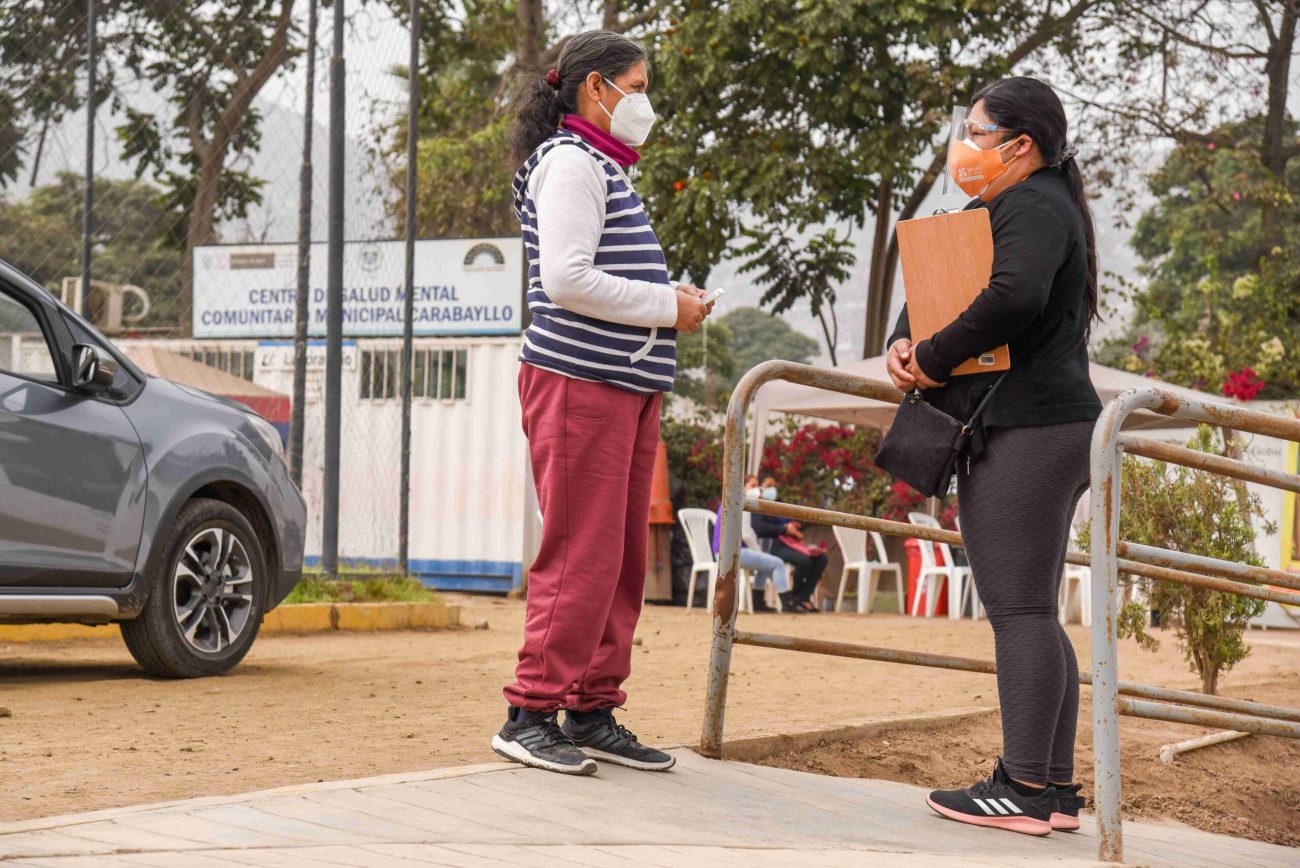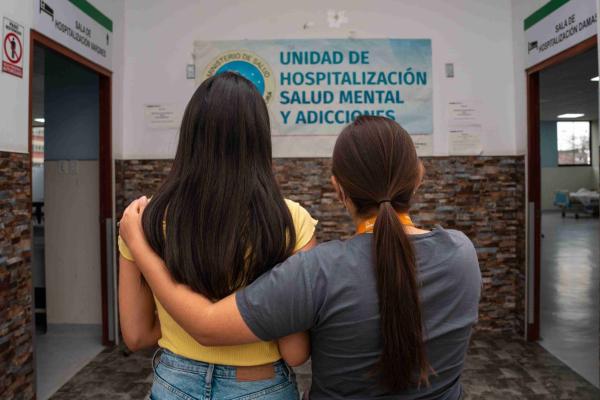Suicide is a public health problem that still carries many stigmas, claiming more than 700,000 lives each year worldwide (WHO). Since 2003, WHO and the International Association for Suicide Prevention (IASP) established September 10 as World Suicide Prevention Day, with the mission to raise awareness and promote initiatives that contain suicidal ideation.
Peru is no stranger to this reality. According to the National Informatics System of Deaths (Sinadef), in the last ten years more than 6000 deaths by suicide were recorded. Its origin involves mental disorders such as depression, but it is not the only one.
“Suicidal ideas can also occur in unforeseen situations that generate a strong emotional impact, usually pain in the face of a real or imaginary loss,” says Maria Fernanda Amézquita, psychologist of the Mental Health Program (SAME) of SES.
Warning signs include expressions of hopelessness, isolation, drastic changes in behavior, and the aforementioned suicidal ideation, which demands immediate attention and support.
Stigmas about suicide: understanding the reality
Preconceived ideas and myths about suicide not only compound the silent suffering of those struggling with these thoughts, but also make prevention and help-seeking difficult.
People struggling with suicidal thoughts often fear being judged or rejected if they talk about how they feel, so they choose to isolate themselves. Therefore, it is crucial to banish some stigmas and understand the complexity of suicide in order to timely address its prevention:
- People who are suicidal are weak and cowardly: People going through suicidal thoughts are caught in an overwhelming internal battle. Overcoming this scenario requires specialized medical care, as well as great strength that we can be a part of by leaving stigmatization behind and creating safe spaces for dialogue.
- They just want attention, the person who wants to commit suicide just does it: Lack of knowledge and awareness about the emotional background of suicidal ideation causes many people to underestimate these thoughts when someone close to them discusses them. “When we identify a person who presents suicidal ideation, it is key to communicate the situation to the family or people close to them to reinforce supervision, as well as to receive specialized mental health care,” explains Amézquita.
- Suicidal people have mental disorders: A person can live with mental disorders and not manifest suicidal thoughts, just as a person who has taken his or her own life may never have suffered from mental disorders. This stigma results in people who do not have mental disorders, but who are dealing with suicidal thoughts resulting from a crisis or unforeseen situation, not seeking specialized help for fear of being judged or labeled.
- Surely he was sorry for something, it’s his fault: Suicidal people are often blamed for their own death, which further compounds the lack of knowledge about this issue and the suffering of their loved ones. However, most people who die by suicide struggled with serious mental illnesses, such as depression, that affected their ability to make rational decisions.
According to Amézquita, we are all called upon to address these and other stigmas that hold back the prevention and treatment of suicidal ideation and behaviors.
“It is important to strengthen the importance and self-care of mental health in educational institutions, both for students and parents/guardians, as well as to normalize and validate emotions, whether pleasant or unpleasant. We must understand the deadly consequences that can result from a mental health disorder that is not treated in time,” explains the specialist.
Suicidal ideation in more vulnerable groups
Although this problem does not distinguish between ages or socioeconomic factors, the WHO highlights that vulnerable and discriminated groups, as well as adolescents, have high suicide rates.
LGBTIQ+ community
Discrimination and violence based on sexual orientation, gender identity and expression affect the mental health of LGBTIQ+ people, especially in highly sexist and homophobic societies such as Peru.
According to the First Virtual Survey for LGBTI People of the INEI, 62.7% of respondents reported having suffered discriminatory experiences and/or violence of some kind, of which 38.9% presented suicidal thoughts.
These figures are not far off in high-income countries such as the United States, where according to the NGO The Trevor Project, at least 41% of young people between the ages of 13 and 24 have thought about ending their lives as a result of the discrimination they suffer in various settings, from home to school or university.
“This greatly affects self-esteem and the projection of future goals. Many people in the LGTBIQ+ community often consider it a challenge to live and face adversities; in others this becomes a mental health problem such as depression,” explains Amézquita.
Psychologist María Fernanda Amézquita during a visit to Brenda, a transgender woman struggling with depression and suicidal ideation.
Recognizing the LGBTIQ+ Community as a vulnerable population at risk for mental health problems, a product of the discrimination and physical, verbal and sexual violence they have historically suffered, is the first step to understanding the dimension of this issue.
The next step can begin with actions that are simple in appearance, but with great meaning: from calling an LGBTIQ+ person by the pronoun or social name by which they identify, to not reproducing jokes, messages or hate speech against LGBTIQ+ people.
Adolescents
According to Sinadef data (2021), the suicide rate in adolescents (12 to 17 years old) is 3.6 per 100 thousand inhabitants, higher than the national rate of 2.2 per 100 thousand inhabitants.
Adolescence is widely recognized as a stage of profound physical and emotional changes, which without proper accompaniment and socioemotional skills can become stormy.
The need for permanence and acceptance in a social group is one of the many factors to consider when dealing with people who are beginning this stage of their lives, so it is important to strengthen self-esteem or implement social skills from childhood.
“This will reduce the likelihood of triggering a mental health problem in the future, because the person will have more resources or tools to deal with negative criticism or social pressure,” says the mental health specialist at SES.
Some warning signs to pay special attention to are lack of communication, social isolation, behavioral problems, altered sleep quality, increased and/or decreased appetite, learning problems, unhealthy friendships or relationships, as well as high levels of insecurity, translated into feelings of failure or worthlessness.
For parents, it is important to validate all the emotions and feelings their teenagers may be going through, replacing the word “you should” with “I understand.”
“It is essential to generate an atmosphere of trust and warmth in order to establish a relationship with transparent communication that allows early identification if there is the presence of any mental health problem, while allowing them to generate awareness of such disorders and seek specialized help when necessary, without fear.

Community agent Pilar Cruzado (right), from the Mental Health Program, accompanies a patient diagnosed with schizophrenia to a community health center in Carabayllo.
Mental Health Care to Prevent Suicide
Through our Mental Health Program, since 2018 we have provided a community-based, comprehensive and sustainable response to people with conditions ranging from depression and anxiety to schizophrenia and other serious mental disorders, promoting timely access to the health system to strengthen the coverage, capacity and quality of mental health services.
In the last year, more than 13 thousand people accessed free screenings to identify mental health problems, of which more than half agreed to receive accompaniment by SES.
We also identified more than 800 people with suicidal thoughts, and more than half of them were referred to specialized mental health centers for timely care and to start a new stage in their lives.
Therefore, today we reaffirm our commitment to continue to ensure the mental health well-being of Peru’s most vulnerable populations, while highlighting the importance of promoting a clear, respectful and safe conversation about suicide prevention.
